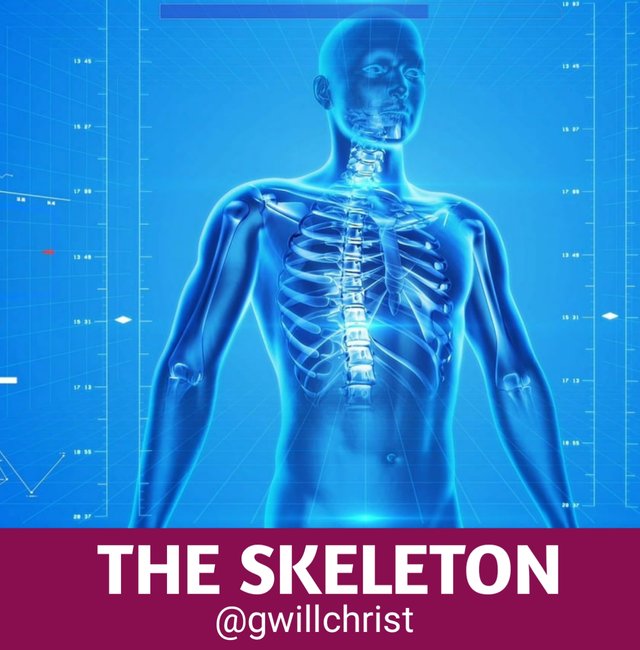My Lifestyle content choices: Tutorial | The Skeleton | by @gwillchrist

Let's go!

THE SKELETON |
|---|

FUNCTIONS OF THE SKELETON |
|---|
Protection: It protect some vitals organs in the body e.g the skull protect, the brain, thoracic cage protect lungs and heart.
Support: It provides support to some internal organs. It also gives forms and shape to the body.
Locomotion: Skeleton provides points of attachment for muscles whose contractions bring about movement of the limbs.
Production of red blood cells: This take place in the bone marrow of skeleton thus it serves as a reserve house for the supply of mineral salts for the body e.g calcium and phosphorus.

THE VERTEBRATE SKELETON |
|---|
The endoskeleton of mammal consist of two parts.
Axial skeleton and appendicular skeleton:
The axial skeleton consist of the skull and the vertebral column (backbone).
The appendicular skeleton is made up of pectoral and pelvic girdles, the fore and hind limb bones. There are about two hundred and six bones in the human skeleton.

THE AXIAL SKELETON |
|---|
The skull, which is one of the bones of the axial skeleton consist of three main regions:
The cranium: The cranium (brain box) protects the brain.
The facial skeletons: It supports the eyes, nose and muscles of cheek.
The jaw: It is divided into upper jaw and lower jaw (mandible) and contain the teeth.

THE VERTEBRAL COLUMN |
|---|
The vertebral column forms the backbone and protects the spinal cord. The vertebrate are held one to the other with ligament (in vertebral disc) between consecutives vertebrae. There are five different types of vertebrae in mammals: these are cervical, thoracic, lumbar, sacral and caudal vertebrae.

DISTINGUISHING FEATURES OF VERTEBRAE |
|---|
Cervical vertebrae
I. Short neural spine
II. Two vertebral canals through which blood vessels of the neck pass
III. Large neural canal
IV. Small centrumAtlas: (First cervical vertebrae)
I. Large neural spine
II. No centrum
III. Strong, flat and broad transverse processes
IV. Reduced neural spineAxis: (second vertical vertebrae)
I. Broad flat centrum
II. Large and flattened neural spine
III. Odontoid process fits into the neural canal
IV. Small transverse process
V. Flat cervical ribsThoracic vertebrae
I. Large neural canal
II. Neural spine is long slender pointing backwardly
III. Well-developed transverse process
IV. Small cylindrical centrum
V. The tuberculum of the ribs articulates with the transverse processLumbar vertebrae
I. Large thick (short) centrum
II. Short and flat neural spine
III. Long and short transverse process which points forwards and downwards
IV. High neural arch with several projectionsSacral vertebrae
I. Large centrum
II. Reduced neural spine
III. Narrow neural canal
IV. Large fused vertebrae called sacrumCaudal vertebrae
I. Few processes and most have only a centrum
II. In man, these bones are four vertebrae forming the coccyx

I love this lecture a lot because that is even what I am learning currently. More of this lesson please
Thank you very much ma'am,
Biology is my favorite course.
Good! I have exam to take soon, and I think following this lesson will help
We support quality posts anywhere and any tags.
Curated by : @sduttaskitchen
Nice lecture to learn and am learning already thank you for the invitation. Keep moving 👏
Thank you ma'am,
I appreciate 🙏
Mr. Lecturer, I appreciate your contribution in this aspect, keep up the good work.